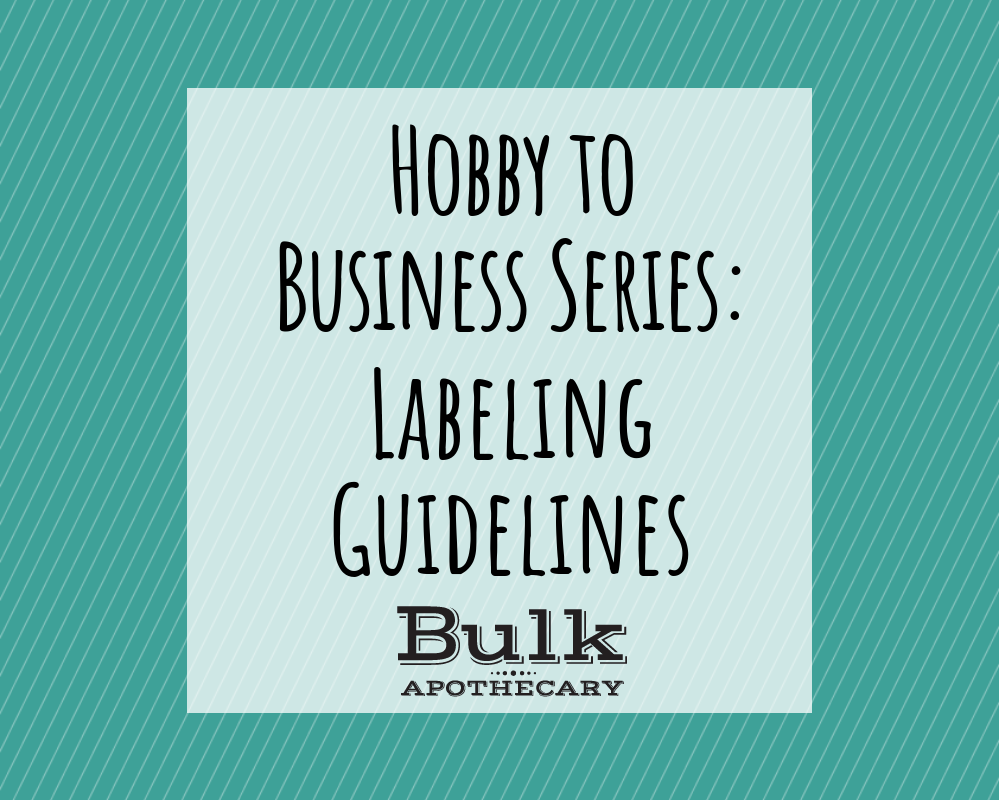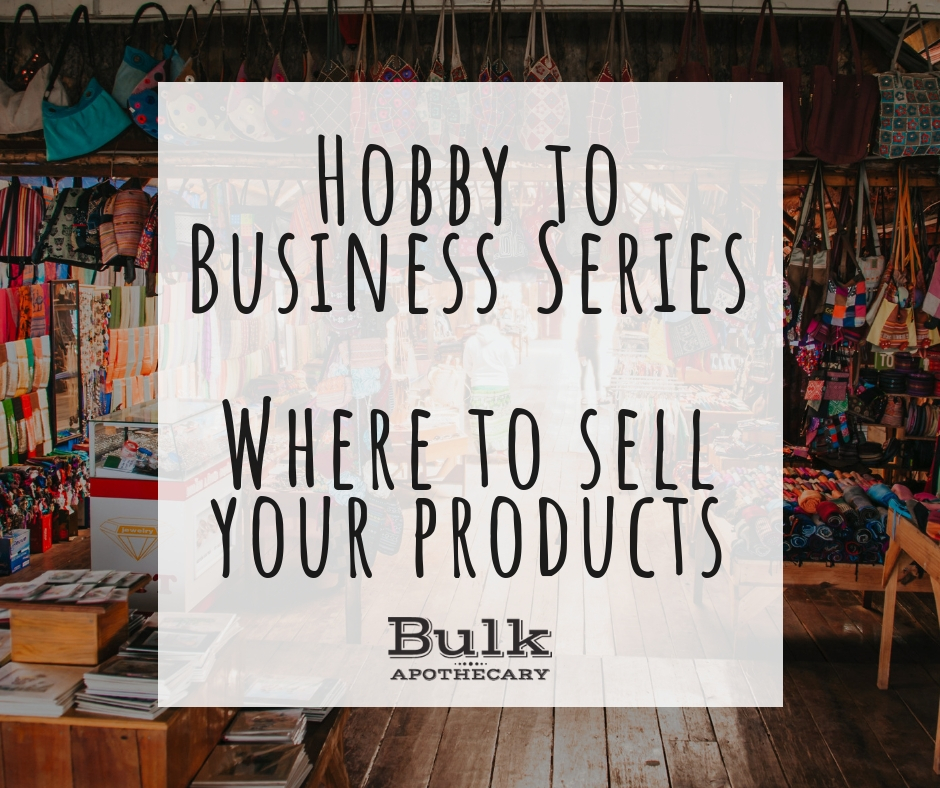Introduction
Author Marie Gale said it best: “Getting the labeling right isn’t very complicated… but it is very detailed.”
In our previous posts, we’ve discussed how to establish your brand and product packaging, so hopefully, by now, you have gathered some ideas as to how you want your product to look, as well as the type of packaging that would best suit your product. But how can you sell an awesome line of products without corresponding labels?
I’ve met so many creative minds here at Bulk, and I am grateful to have had the opportunity to collaborate with our Graphics & Custom Label team for their insight as to what makes a successful product label. Today we will explore some of the general cosmetic labeling guidelines as well as some useful tips to take into consideration.
A Look at FDA Guidelines
Here in the United States, the Food & Drug Administration defines a label as “the written, printed or graphic matter affixed to any consumer commodity or affixed to or appearing upon a package containing any consumer commodity.”
The FDA defines a cosmetic as “a product, except soap, intended to be applied to the human body for cleansing, beautifying, promoting attractiveness or altering the appearance.” ***Important note: some melt and pour soaps are considered a cosmetic, not a “true soap” by FDA standards. (Yes, it is still technically soap but we’ll save that topic for another blog post!)
The FDA has a complete, comprehensive list of labeling guidelines available on their website, but today I wanted to talk about a few key points that specifically pertain to the labeling of cosmetics.
- Principal Display Panel – Often referred to as PDP, this is industry-standard terminology that basically means that this is the area of your label that is most likely to be seen by the consumer. The PDP, as you can imagine, is typically the front of the label.
- Ingredients – Your ingredients list, also referred to as an ingredients declaration, must include all ingredients in order of prominence, meaning that the ingredient that is used in the highest amount must be listed first.
- Net Weight – The weight of your finished product must appear on the label. This information is best displayed on the PDP.
- Warnings & Directions for Safe Use – Your product label should have warning information if applicable. This is usually not needed for things items such as soap. If you are selling a roll-on blend of essential oils, it may be a good idea to make sure your label includes a warning statement such as “discontinue use if irritation occurs.”
- Business Information – You want return buyers, don’t you? Then you have to make sure your customers can get in touch! You or your company’s name as well as contact information such as an email address, phone number or website.
About Medical Claims
It is important to be mindful of making medical claims about your product and what your product can do to benefit your customer. Did you know that a simple statement such as “treats acne” on your label could put you in violation of the FDA? That’s because it is considered a medical claim on a cosmetic product – which then becomes classified as a drug per FDA standards.
The FDA states that drugs are intended to “affect the structure or a function of the body.” By making claims that your consumer can cure, treat or manage a disease or condition by using your product subjects you to unnecessary legal trouble. Keep in mind that the FDA isn’t necessarily knocking on any handcrafter’s door, but as you scale up your business it’s important to keep ethics in mind. It’s vital to do things the right and legal way, not only due to common sense but also because this will allow you to uphold your professional, reputable image.
For example, instead of saying your lotion treats eczema, say that it soothes dry skin. Be as descriptive as possible without making any treatment or condition-relieving implications.
If you are having trouble making the determination whether or not your product would be considered a cosmetic vs. drug, ask yourself this: “Am I marketing my product to treat/cure an ailment?” If you answered “yes” to this question, it is likely your product would be considered a drug under FDA guidelines and you must follow those guidelines, especially if your product contains an active ingredient. For example, the alcohol in hand sanitizer is considered the active ingredient.
Now that we’ve covered some of the rules, let’s take a look at more of the exciting aspects of creating a label!
Compelling Copy
Excellent labeling and branding are conducive to your product selling itself. Sure, you need an ingredients list, but what about a product description?
You’ll want to pack a punch with your product description because when working with a label, you are limited on space. It is a great idea to get out a pen and paper and start brainstorming words and key phrases as to how you would like your product description to convey your brand’s message. I personally prefer to brainstorm on a sheet of blank computer paper – with no lines, this allows me to freely get all my thoughts & ideas out and tangible. Below are some items to consider when constructing your product description and I highly encourage you to jot down some of your own ideas.
- What kind of product are you providing?
- When your customer picks up your product, how do you want them to feel?
- What do your customers need to know about your product?
- Why should your customer use your product?
- What will your customer gain by using your product?
- What supporting illustrations would you incorporate to match your verbiage and brand?
Pick out 2 or 3 key product features to highlight in your product description. Keep it short and sweet. Customers are more likely to buy a product if they can quickly process the information and learn to understand how the product will benefit them before they even purchase it.
Colors
Color is absolutely one of the most valuable elements in label design. Of course, there’s nothing wrong with a black and white label, but how boring would it be if every single product out there looked the same?
Labels with color keep your product noticeable among others and will leave your customer with a lasting impression. Think about how we use highlighters when we study or how we color-code items to better organize. We use these methods to help us remember things because it works! So, which feelings and emotions do certain colors illicit? Here’s a quick snapshot.
- Red – Stimulation, exciting, ambitious, powerful, courageous, warmth, excitement
- Orange – Fun, instinctual, new, motivational, safety, passion, sensuality, abundance
- Yellow – Optimistic, confident, attention-grabbing, creativity, childlike, friendly
- Green – Environmental awareness, wealth, prosperity, restoration, reassurance, peace, growth
- Blue – Trust, loyalty, responsibility, soothing, calm, contentment, efficiency, logic, purpose
- Violet/Purple – Luxury, vision, quality, authenticity, deep, royalty, awareness, reputable
- Pink – Tranquil, warm, loving, calm, intuition, femininity, nurturing
- Black – Powerful, sleek, sophisticated, glamorous, efficient, elegant, strength, mystery
- White – Purity, clarity, sophisticated, hygienic, clean, higher perception of space
- Brown – Nature, reliability, earth-friendly, conservative
- Grey – Neutral, calm, balancing
Choosing a color scheme that accurately depicts your brand’s message will help make the look of your label a memorable one.
Bringing Your Ideas to Life
Now that you have some ideas to reflect upon, it is time to consider investing in the expertise of a graphic designer and printing company. Perhaps you want a graphic designer to design your entire label for you, or would like to pay a small fee to have your pre-existing design cleaned up a bit. Just like we trust our family doctor when they prescribe us a medication or how we trust the cashier to give us the correct amount of change, it’s also important to trust the advice of a seasoned, professional graphic designer. We’ve got a team of them here at Bulk and there are many other great resources across the web for freelance design work.
Professional-looking labels are absolutely worth the investment. A high quality, well-designed label will help your customers establish a level of trust with your product and brand. Not only are they able to gain all the information they need about your product, but they are also able to take in the imagery, verbiage and feel to walk away with a complete, accurate message about your product.
Join us next week for Labeling: Part 2 as we explore some industry-standard terminology in the world of custom labeling and printing. We will walk you through our custom labeling process here at Bulk to help you gain a better understanding of this aspect of your business.




Do I need to oil the silicone mold before using?
You do not need to oil it.
Great tips! Thank you so much!
You’re welcome!